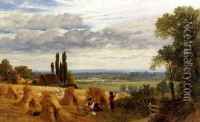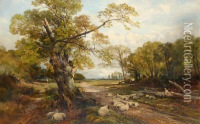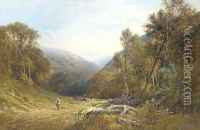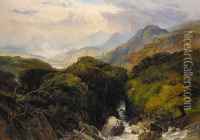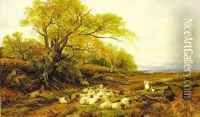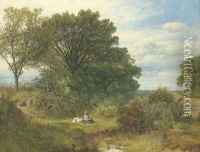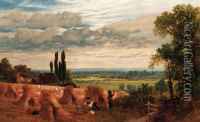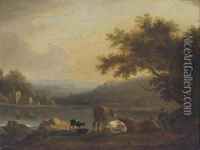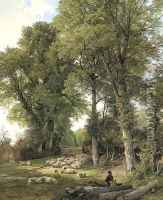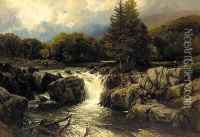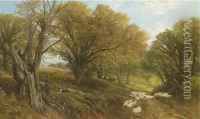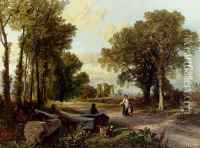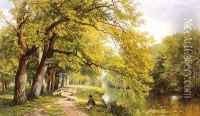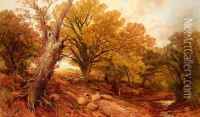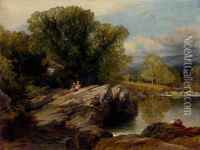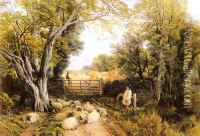Frederick William Hulme Paintings
Frederick William Hulme was a notable British landscape painter, born in 1816 in Hanley, Staffordshire, England. Known for his picturesque landscapes that often incorporated elements of the British countryside, his work is characterized by a detailed and naturalistic style, capturing the serene beauty of rural England during the 19th century.
Hulme began his artistic career as an apprentice to a china painter, a common practice in the Staffordshire area, known for its pottery industry. This early experience with fine detail and decorative arts would influence his later landscape paintings. He eventually moved to London to pursue his career as an artist, where he entered the Royal Academy Schools in 1844 to further his education in fine arts.
Throughout his career, Hulme exhibited his work regularly at the Royal Academy and the British Institution. His paintings were well-received and admired for their faithful representation of nature and their tranquil, idyllic quality. Hulme's landscapes often featured rivers, trees, and rural scenes that were composed with a sense of harmony and peacefulness.
Hulme was also an art teacher, sharing his knowledge and skills with a new generation of artists. He authored a book titled 'The Art of Landscape Painting in Oil Colour' which was published in 1867 and served as a practical guide for aspiring landscape painters of the time.
Frederick William Hulme's dedication to capturing the essence of the English countryside has left a lasting impression on the genre of landscape painting. His work continues to be appreciated for its attention to detail, composition, and its ability to convey the tranquil beauty of nature. Hulme passed away in 1884, leaving behind a legacy as a skilled painter and educator in the world of 19th-century British art.
